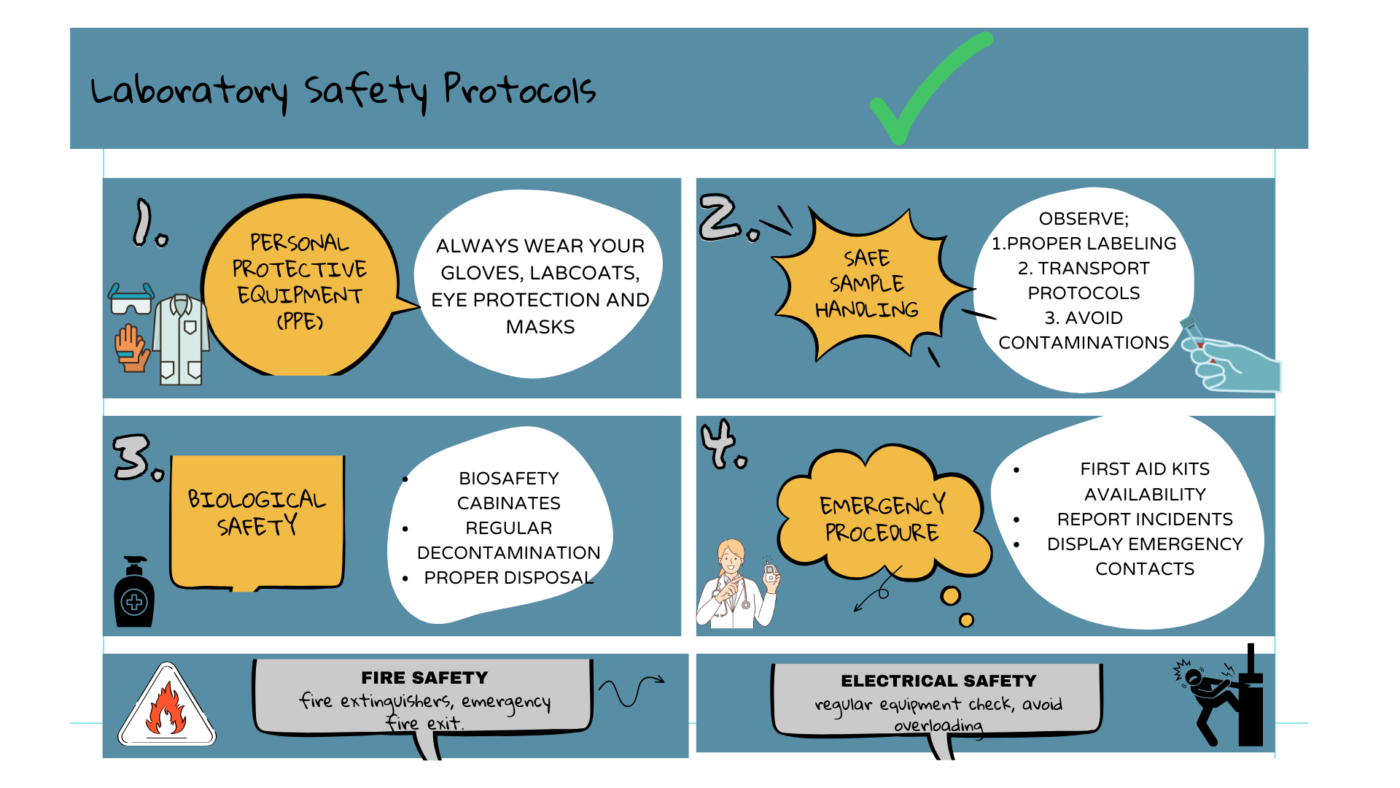Laboratory Safety Protocols
These include the safety guidelines for every staff in the laboratory. Awareness and compliance with safety standards help lower incident rates in the laboratory and health facilities.
- Personal Protective Equipment (PPE)
- Gloves: Always wear gloves to protect the hands from chemicals and biohazards.
- Lab Coats: Wear lab coats to shield your body and clothing.
- Eye Protection: Use safety goggles or face shields to protect eyes from splashes.
- Masks: Use masks to prevent inhalation of hazardous substances.
—
- Safe Sample Handling
- Proper Labeling: Clearly label all samples to avoid mix-ups.
- Transport Protocols: Use secure containers to transport samples and prevent leaks or spills.
- Avoid Contamination: Use sterile techniques to handle samples and avoid cross-contamination.
- Careful handling of sharps to avoid pricking.
—
- Chemical Safety
- MSDS Sheets: Always review Material Safety Data Sheets for information on handling chemicals.
- Proper Storage: Store chemicals according to their specific requirements (e.g., flammable materials in flammable storage cabinets).
- Spill Response: Follow spill response procedures and have spill kits readily available.
—
- Biological Safety
- Biosafety Cabinets: Biosafety cabinets are used for handling infectious materials.
- Decontamination: Regularly clean and decontaminate work surfaces and equipment.
- Proper Disposal: Dispose of biohazardous waste in designated containers.
—
- Electrical Safety
- Inspect Equipment: Regularly check equipment for frayed wires or other damage.
- Avoid Overloading: Do not overload electrical outlets or use damaged cords.
- Emergency Shut-Off: Know the location of emergency power shut-off switches.
—
- Fire Safety
- Fire Extinguishers: Ensure fire extinguishers are accessible and know how to use them.
- Emergency Exits: Familiarize yourself with the location of emergency exits and evacuation routes.
- No Open Flames: Avoid using open flames near flammable substances.
—
- Posture and Manual Handling
- Proper Lifting Techniques: Use correct lifting techniques to avoid injury.
- Workstation Setup: Adjust workstations to promote good posture and reduce strain.
—
- Emergency Procedures
First Aid Kits: A fully stocked First-Aid kit should always be available.
Report Incidents: Report any accidents or near-misses immediately.
Emergency Contacts: Display emergency contact numbers prominently.

